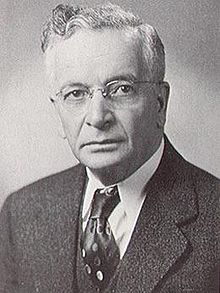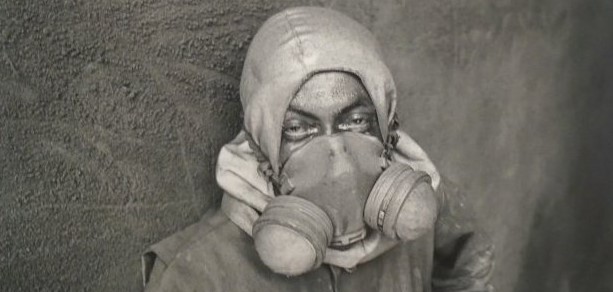“Syrians” and Race in the 1920s
This article is written by Dr. Akram Khater, Director, Khayrallah Center for Lebanese Diaspora Studies and a professor of history at North Carolina State University. He has published extensively on Lebanese migration to the United States. He is also the Khayrallah Chair in Lebanese Diaspora Studies, a University Faculty Scholar and the editor of the International Journal of Middle East Studies. His last piece addresses myths related to gender and Lebanese immigration.
It is tempting to see recent arguments about the role and place of Arabs in the US as a byproduct of the fear generated by the events of 9/11 and subsequent terrorist attacks. And there is no doubt that these events have catalyzed and crystallized feelings of mistrust and animosity toward the community. However, the hateful diatribes and heated debates along with the sense of alienation and marginalization they generate among many Arab Americans are only the latest in a long history of discrimination against this community.[1]

The long history of these attacks is reflected in a debate that raged in the 1920s across the pages of The Syrian World (an English language Arab American magazine published by Naoum Mokarzel). The arguments between various Arab American letter writers centered on whether “Syrians” (the term used by immigrants from the area that later became Lebanon, Syria and Palestine) would ever be accepted in the United States. The debate began with a 1927 letter written by Dr. Michael Shadid, a self-described “Syrian Socialist” living and practicing medicine in Elk City, Oklahoma. Titled “Syria for the Syrians”, the essay argued that “Syrians” will never be accepted in America because of racial prejudice. He noted, “Indeed it may be said that among native born Americans there is more prejudice against foreigners in general and Syrians in particular than in any other country of the wide world.” Moreover, he contended, this racism permeated all classes, and most notably the middle classes as evidenced by the sharp membership increase in the Klu Klux Clan from within this social strata. He went on to support his contention with stories of his own experiences of being shunned by “educated” people, and that of a fellow “Syrian” in Greer County (Oklahoma) who was forced to leave town after KKK threats against his newly opened store, and against his very life.
The letter–and Shadid’s suggestion that the only solution is for “Syrians” to go back to “Syria” where they can enjoy full respect–elicited great many responses. In the same issue where his essay was published (February 1927), the editor of The Syrian World took exception to his generalizations and solution. After expressing sympathy for the racism Dr. Shadid faced, the editor (presumably Salloum Mokrazel) dismissed it as an unfortunate accident of place and circumstance rather than a widespread phenomenon. He noted that only a “class that is provincial, narrow, short-sighted and destructive of the true American spirit” will make such displays.
On the other hand, educated Americans truly appreciated the benefit that immigrants brought to America. In other words, Mokarzel was arguing that it is only among the lower classes that the ideas of the KKK thrived, while the middle classes were above such bigotry. Placing “Syrians” squarely within this “respectable” class, he noted that since they “are mainly of the mercantile and industrial class” they can simply move to a more hospitable location to escape ostracism and racism. (This myth that all “Syrians” are middle class entrepreneurs is at odds with the reality that only some immigrants succeeded financially, and many remained part of the lower classes working in factories, mines, offices, etc.)

In later letters (published in 1927 and 1928), other authors equally also Dr. Shadid’s “pessimism”–as one termed it–about America, and even chided him for giving up in the face of “few” discriminatory incidents. One author noted that the passage of time will resolve this type of racism. He wrote, “Despite all one’s efforts to find for one’s self a niche in the American community, which is American in every aspect, there is always that door through which one may not enter. The password is fourth generation Americanism.” Fayad Barkett (Barakat?) wrote to defend Oklahoma against Dr. Shadid’s critique. Having spent 21 years in Oklahoma, Fayad countered the charge of social ostracism by listing a number of “Syrians” who occupy places of social and political prominence (mayor, master of Masons chapter, justice of the peace, Commander of the American Legion, etc.). Even the KKK, he wrote, are not opposed to the “Syrians” and therefore the latter should not occupy themselves with challenging the activities or narrative of the KKK. “In conclusion, I must say that in my humble opinion the Syrians in America should not fear any prejudice as long as they maintain their loyalty to their adopted country, attend to their own business and discharge their duties as true citizens.” The subtext of this rebuttal is that the KKK is not a concern of the “Syrians” since their activities and rhetoric are directed at other “races.”
Joseph David (Jacksonville, Florida) did not deny that racism plagued “Syrians,” but he argued that this is a common malady that afflicts them as much as any other American. He noted: “Why, even in this country of enlightment [sic] and tolerance, we find that some of our own land still wanting us to believe that there is greater difference between one Syrian born in one section of the country and another in another section, than the bigoted American thinks there is between an intelligent native born American and an ignorant undesirable Syrian.” Like many other authors, he concluded that the success of the “Syrians” is the best antidote to racism. “The thing for the Syrians to do is to prove their worth, individually and collectively. They may be slighted before they are well known, but eventually they will win out.” As with Mokarzel’s argument, all these authors assumed that with time and rise in social status, as well as avoiding any challenge to the prevailing social mores and power structures, “Syrians” will eventually be accepted as Americans. Dr. Elkourie (Khoury) from Birmingham, Alabama–who faced several racist attacks himself–sums up this argument as follows: “ The seeming ostracism is not an organized or intentional hatred, as some would convey, but only because the Syrians do not control sufficient political, sociological, commercial and numerical strength, to command the standing held by Germans, Irish or Italians.”
This debate continued over the span of the next two years, with most of the interlocutors writing in vehement and mild opposition to Dr. Shadid’s argument. (This may have been the case because the majority of the readers of The Syrian World were middle class “Syrians” who were keen to maintain their newly acquired social standing rather challenge the system as a whole.) But despite their protestations to the contrary, Dr. Shadid’s argument was unfortunately vindicated in 1929 by the pronouncement of US Senator Reed of Pennsylvania. On April of that year, and during the heated discussion surrounding the Immigration Bill–whose supporters sought to limit migration of non-Europeans–Senator Reed proclaimed that before WWI: “We got the trash of the Mediterranean, all that Levantine stock that churns around through there and does not know what its own ancestry is. It came here in large numbers from Syria…” Subsequently, “Syrian” clubs from across the US protested his blatant racism and attacks on the “honor” of the “Syrian” community. One observer, K. A. Bishara (who was the Pastor of the Syrian Protestant Church in Brooklyn, NY) wrote: “ Senator Reed should be reminded of the fact that he is counted among the “white trash” by his Southern negro neighbors.” This charged, albeit indirect, exchange was a clear example of how embroiled “Syrians” were in the racial politics of the US, and how–regardless of wishful thinking on the part of some–their position in American society was marginalized by discrimination.

Ninety years later Arab Americans find themselves once again attacked, scrutinized and marginalized, with major political figures casting doubts about whether they “belong” in America. This long history of anti-Arab discrimination forces us then to the conclusion that 9/11 was not at the root of the problem. Rather the issue is a latent racism that saw–and continues to see–Arabs as outside American society and history, despite 150 years presence in this country. Social and economic achievements (Arabs tends to be more prosperous and better educated than the general US public), integration into all aspects of civic life, and even attainment of high political positions (US senators, governors, etc.) have not significantly altered the predominant anti-Arab narrative, nor allowed Arab Americans any more than a marginal place in society. Of course there are variations from one locale to the next, but the general racist trend remains dominant. (As an exercise, try to find more than a handful of positive images of Arabs on TV or film). It is only when we explore the long history of this phenomenon that we can begin to overcome it. In looking at stories such as Dr. Shadid’s we can more properly diagnose the root causes of the problem, while simultaneously transcending the “terrorist” justification for continued anti-Arab racism.
More on Dr. Michael Shadid
Dr. Michael Shadid was not only a notable “Syrian” for his outspoken views on America’s racial politics in the 1920s. He equally distinguished himself for his openly leftist and progressive politics within the early Arab community, and beyond it as well (He served on the National Executive Board of the Socialist Party.) Originally from Jdeidat Marja’youn (Lebanon), Dr. Shadid arrived in the US at the age of 17, and worked his way as a peddler through medical school at Washington University in St. Louis, Missouri. Upon graduating, in 1907, he began practicing medicine in various places in Oklahoma until he settled in Elk City. Very early on in his career he not only encountered discrimination but also a medical system that exploited the poor. He wrote in a 1912 book titled The Self-Physician, “Under the system of barter, the common prevalence of disease and the dense ignorance of the people regarding the requirements of health are objects of gain and are necessary to the support of an army of doctors, druggists and nostrum vendors whose business consists mostly of taxing people for being sick.” His socialist ideals for healthcare drove him to conceive of a new community-based approach to medicine. Along with some fellow socialists in Oklahoma, he borrowed $25,000 and erected a twenty five-bed hospital. For a $50 initial contribution a family of four could receive full medical care for $1 per month. After initial opposition by doctors in the area and a setback caused by the market crash of the Great Depression of 1929, the hospital became a huge success with 1,800 families of very low means paying the $50 subscription. One noted “It has saved me more than $600 in doctor and hospital bills in the last three years!”
Notes
[1] You can see examples of these stereotypes–as represented in popular culture–in Jack Shaheen’s masterful study of the portrayal of Arabs in film and television. You can also get a quick glimpse from this collage of Hollywood representations titled Planet of the Arabs.
- Categories:


